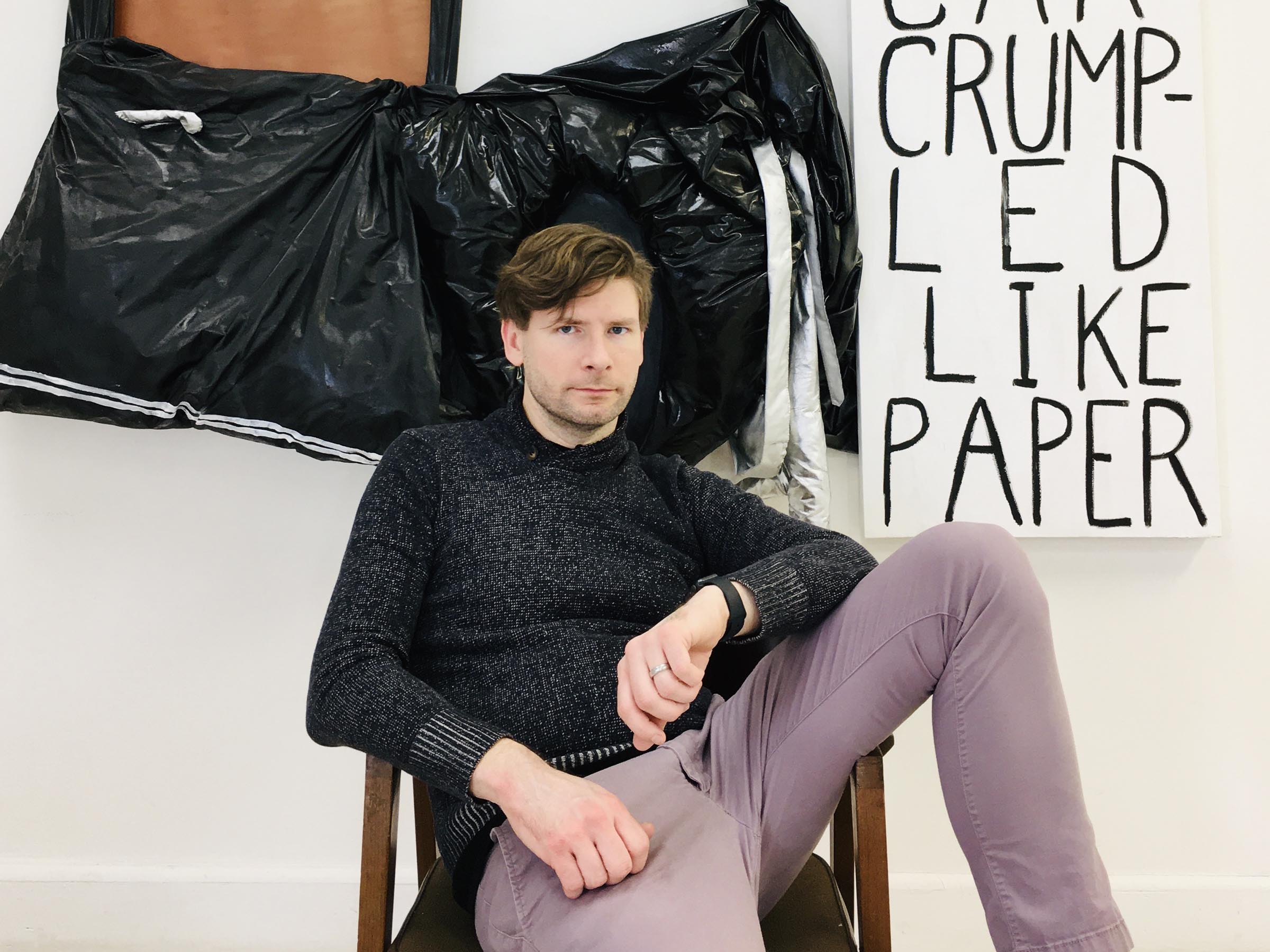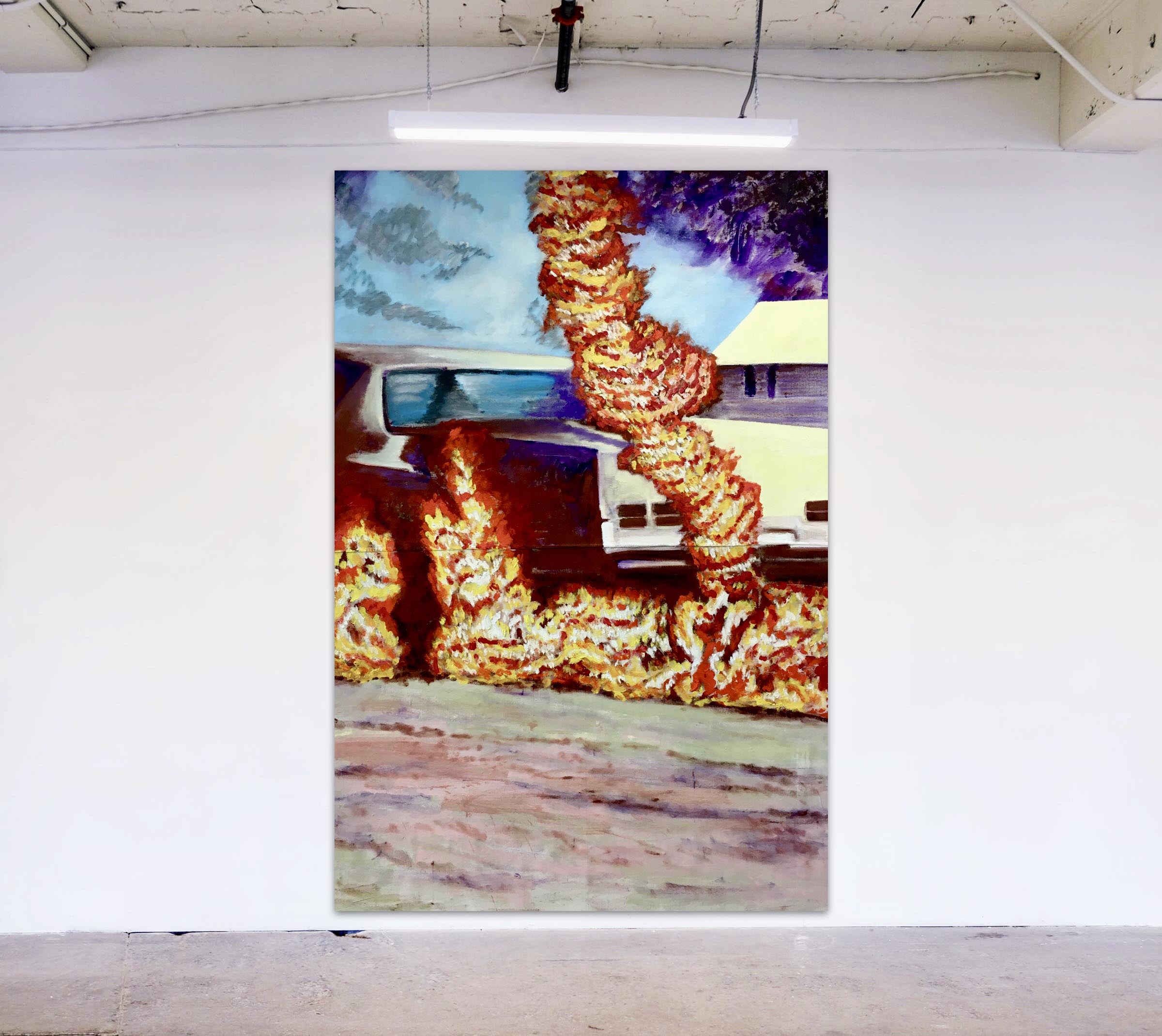How did you get into making art?
I actually can’t remember a time when I wasn’t making art. I didn’t know my father very well when I was growing up but eventually learned that he was an artist, so I guess it was in my genes. I do remember a moment in particular, when I was maybe three or four years old, sitting on the sidewalk drawing pictures with the boy down the street who babysat my sister and me. I remember him drawing a cartoon of a boy with tennis shoes and he drew each of the laces with really great detail. They snaked in and out of the eyelets of the shoes with careful precision and I really wanted to learn to draw as well, with as much detail as he did.
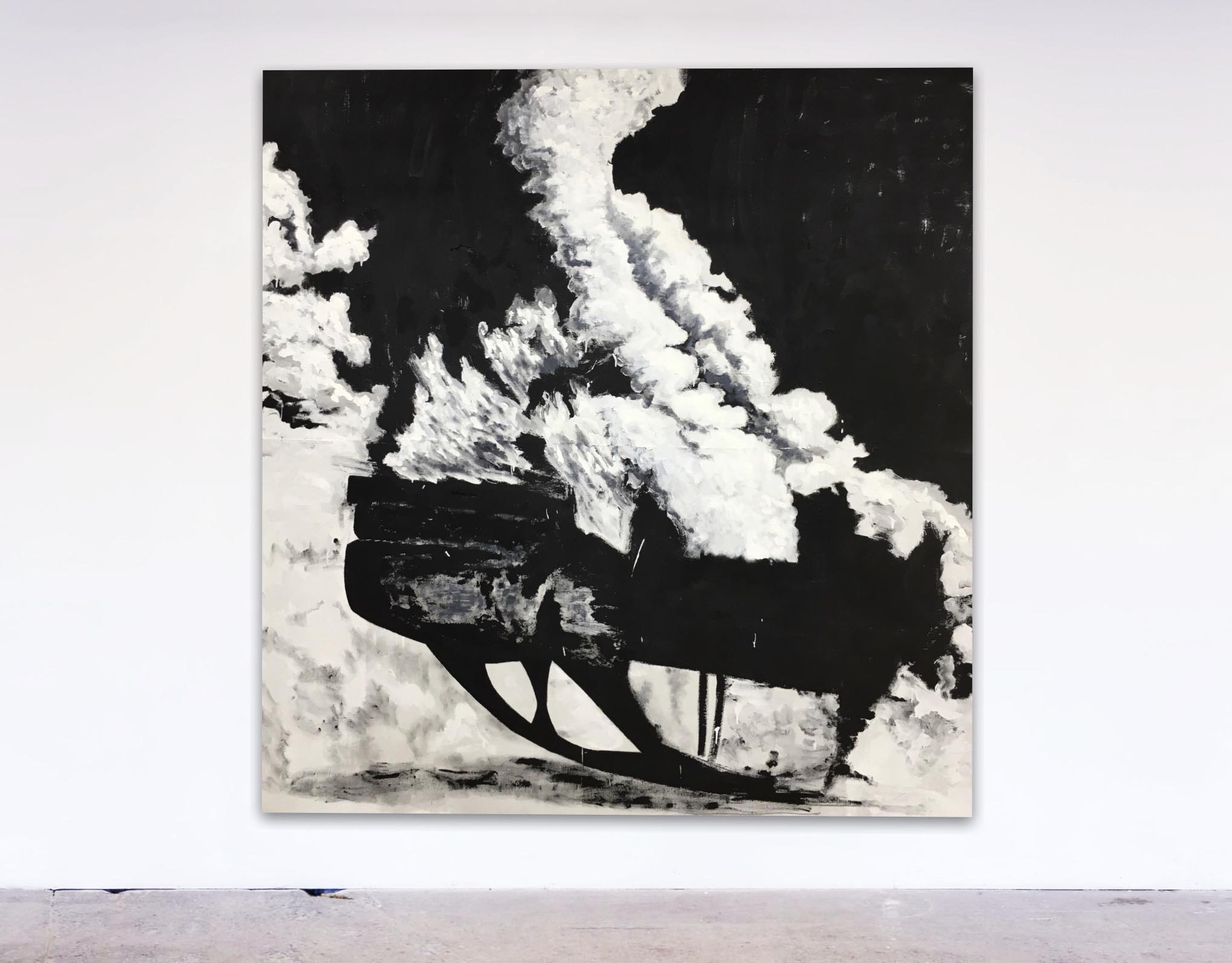

What are you currently working on?
At this very moment I’m on the edge of a transition in my work. This actually happens quite often. I never stay too long in a series and I enjoy the challenge of trying something new. Around the beginning of 2020 I began painting lots of exploding cars. The images were taken from a few various, mostly unrelated sources like an image of a police vehicle overturned and on fire during a protest, or still images from old crash test films. One in particular, a crash test of a Ford Pinto being rear-ended by a Chevy Impala, demonstrates how the positioning of the gas tank causes a fiery explosion that wound incinerate its passengers. For a mere $12 per vehicle, Ford could have fixed this flaw in design, but instead they decided to cover it up. Since the vehicle was marketed as a starter vehicle at a low price, it put lower income families at risk. Some of those visual themes are still creeping into current paintings that I have in the works on my studio walls, but their meanings are changing a bit.
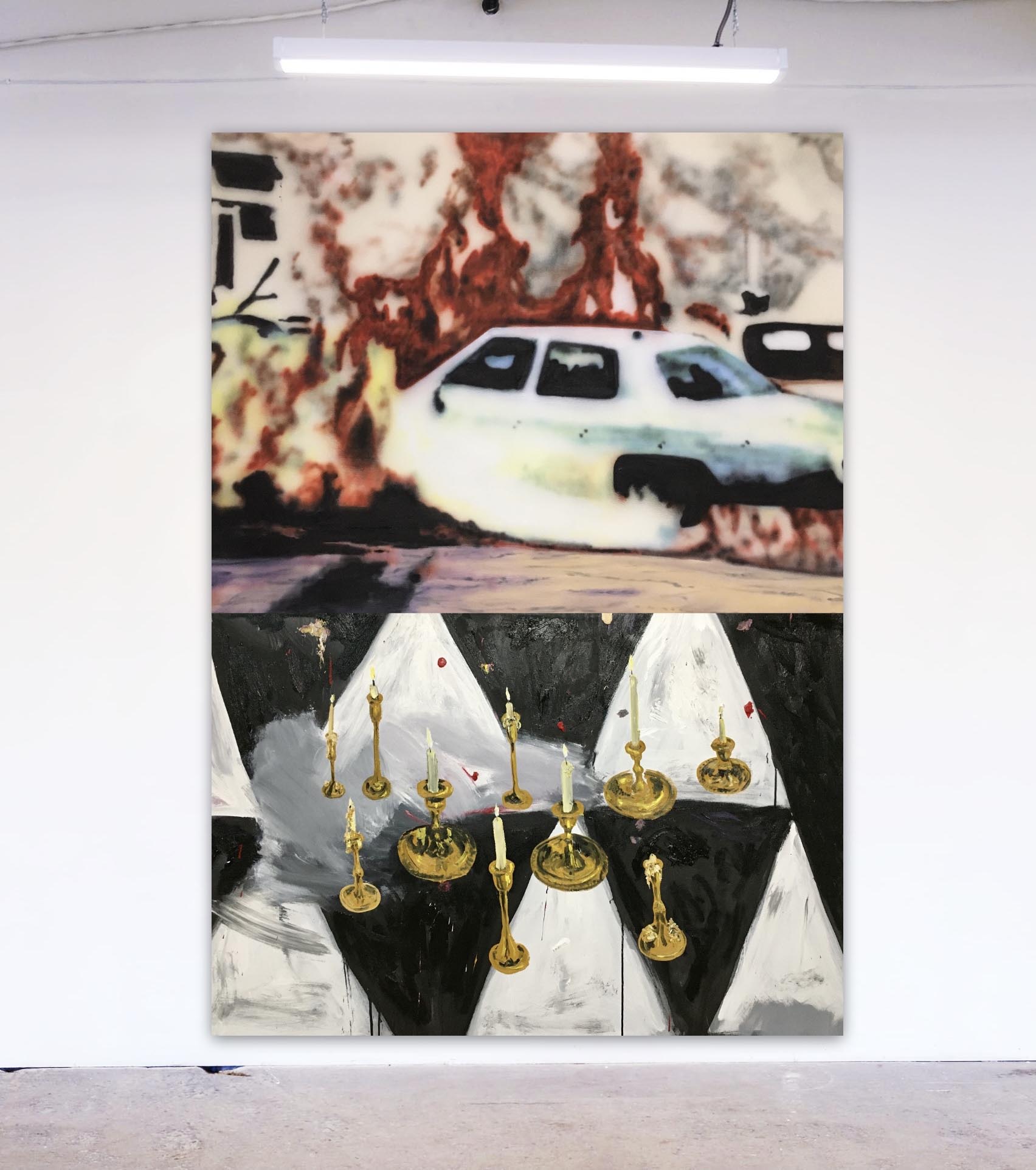
I’m interested in subjects that provoke anxiety and can be used as metaphorical stand-ins for personal traumas I’ve experienced growing up.
David Paul Downs
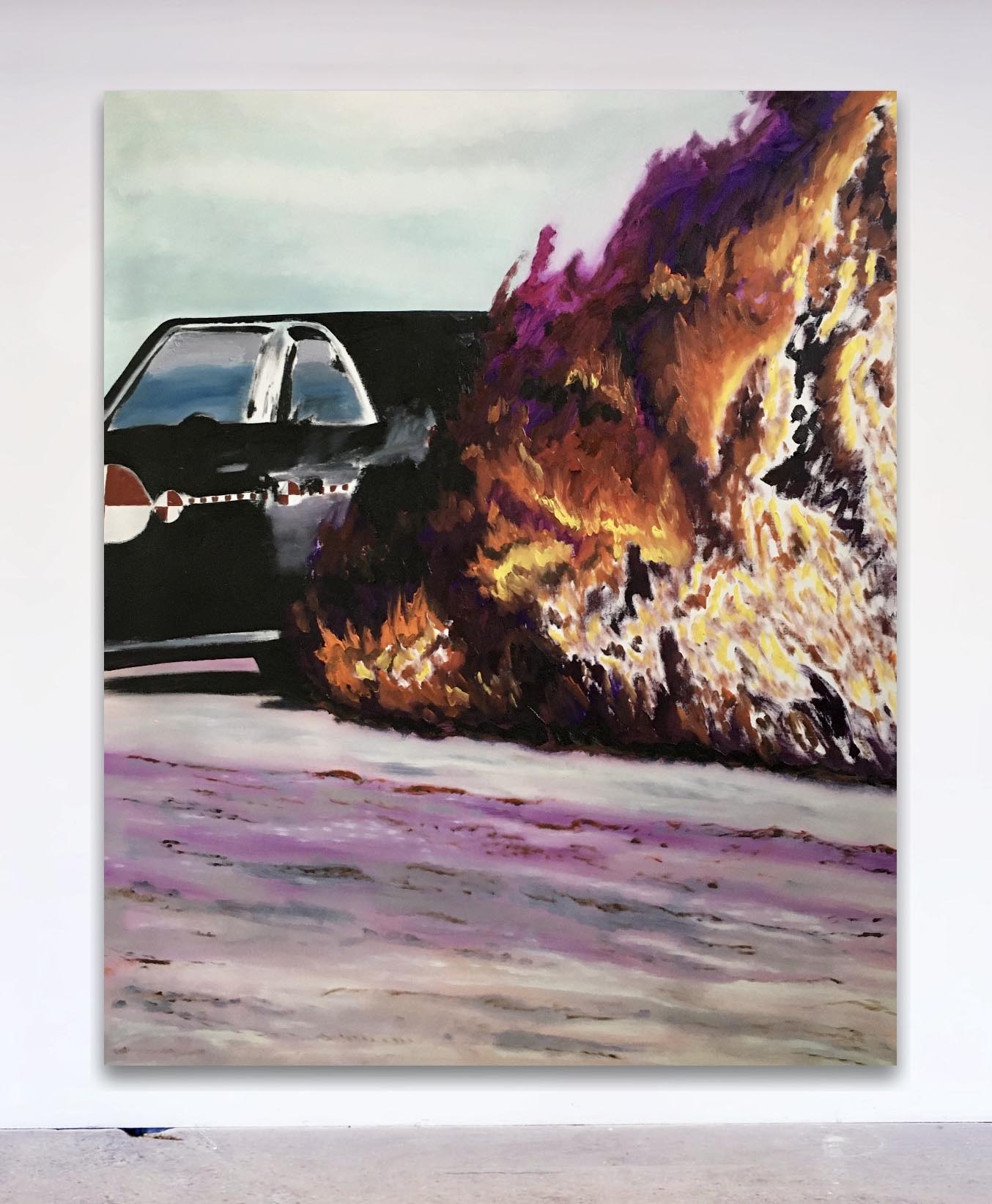
What inspired you to get started on this body of work?
When I started the last series of images, with the car crashes, it was just out of a fascination for the images from these old films. After making a few pieces I was able to analyze what I was after and why. I was recently diagnosed with high functioning autism and Aspergers. It wasn’t really a surprise, but I felt like Theo in the Cosby Show when he finds out he is dyslexic and finally understands why school is so hard for him. It helped me understand myself and my artistic motivations little better. I’m interested in subjects that provoke anxiety and can be used as metaphorical stand-ins for personal traumas I’ve experienced growing up. Through the process of painting, I can reorganize these anxieties and slow them down so they are manageable and even mimic something beautiful. I twisting fire from an explosion, for example, becomes an abstraction of color and form.

Do you work on distinct projects or do you take a broader approach to your practice?
I think I use the concept of painting and what painting can be as the broader approach to my work. In other words, even if I make something sculptural, it might be based on the materiality of painting and is just a three-dimensional painting. I don’t always stick to that limitation but I find that if I deviate from it, I’m not always satisfied with the results. With “painting” as the only real limitation, I’m free to explore whatever subject I want. I let the process guide me until the deeper subject matter begins to emerge. Once that happens, I try to expand upon that subject though a series of works. Sometimes I can’t, and I have to tuck that painting away for awhile in the hopes that it will eventually lead to something later on.
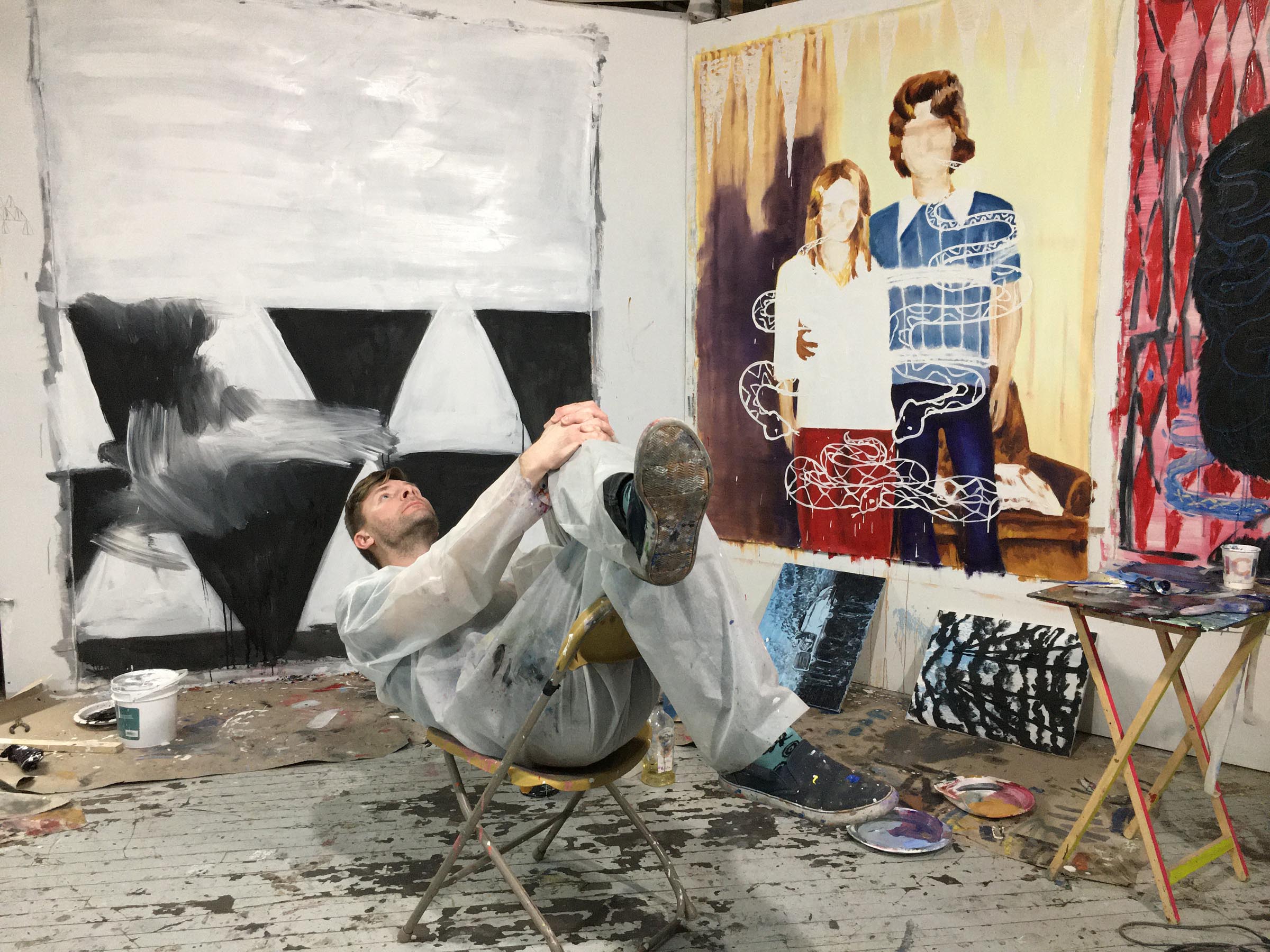
What’s a typical day like in your studio?
Lately, Ive been getting there later than I prefer. My studio is kind of far from my home, so I usually have to wait for the car I share with my wife to be available to me. We both work full time and have a child, so other things often take priority. Because of this, I do a lot of preparation outside the studio, such as working digitally, searching for reference images, taking notes, etc. The neighborhood my studio is in is mostly industrial, with warehouses and treeless sidewalks. There’s a great coffee roaster next door but it closes too early to grab anything from the counter. Still, I do enjoy the smell of the beans roasting as it fills the air outside my studio building at night. Once I get to the studio, I take a few minutes to reacquaint myself with whatever I had going on the day before. If I have something on the wall already, then I’ve probably done some work digitally over a photo of it to progress it further. I get started by trying to recreate the digital changes using paint. If the wall is empty, I staple a piece of canvas up there and prime it right away. As it dries, I look through photographs and video stills I’ve saved and try to find something to start with. I’m usually ready to paint before the primer has a chance to fully dry and so I might start with an acrylic under layer that’s compatible with the acrylic primer. I’m never satisfied with the acrylics, so it always gets repainted in oil eventually. Several hours later, sometime between 10 and 11 P.M., I stop, clean my brushes, and take a few photographs to work on later at home. I wind down on the drive home by listening to some classic rock, like The Rolling Stones or Velvet Underground or 80’s industrial music, like Skinny Puppy or Ministry. Industrial music is also really good to paint to, probably because of the almost mechanical repetition in the beats and sounds. This results in a bit of dancing and aggressive brush strokes. When I’m going for an image that’s a bit more sentimental and poetic, however, I go for Simon and Garfunkel. Otherwise, it’s good to just paint in silence. The floor my studio is on has several art studios set up in an arrangement resembling a shanty town. I haven’t yet met too many artists there, but I’m hoping to get in some longer days and try to actually get to know some.

Who are your favorite artists?
Of the really famous ones, I’d have to say Anselm Kiefer, Robert Rauschenberg, Chuck Close, and Gerard Richter. I’m really into artists that experiment with a lot of different materials. I’m also continually inspired by some younger local Chicago-based artists I know and admire, such as Cindy Bernhard, Boris Ostrerov, Mel Cook, Steve Amos, and Jared Weis (who now lives in Santa Fe). I feel it’s really important to know at least a few artists to motivate and challenge you.


Where do you go to discover new artists?
I try to get out to art shows as much as possible, though these days that’s almost impossible thanks to the pandemic. I work at the Museum of Contemporary Art here in Chicago, so that helps introduce me to more established artists. I also find artists through Instagram. I publish an arts magazine called WERKS, where I interview artists I meet and feature their work. I find that creating a project like this has really forced me to seek out other artists and actually get to know people.
David Paul Downs is an artist based in Chicago who was recently shortlisted for The Hopper Prize. To learn more about the artist:
